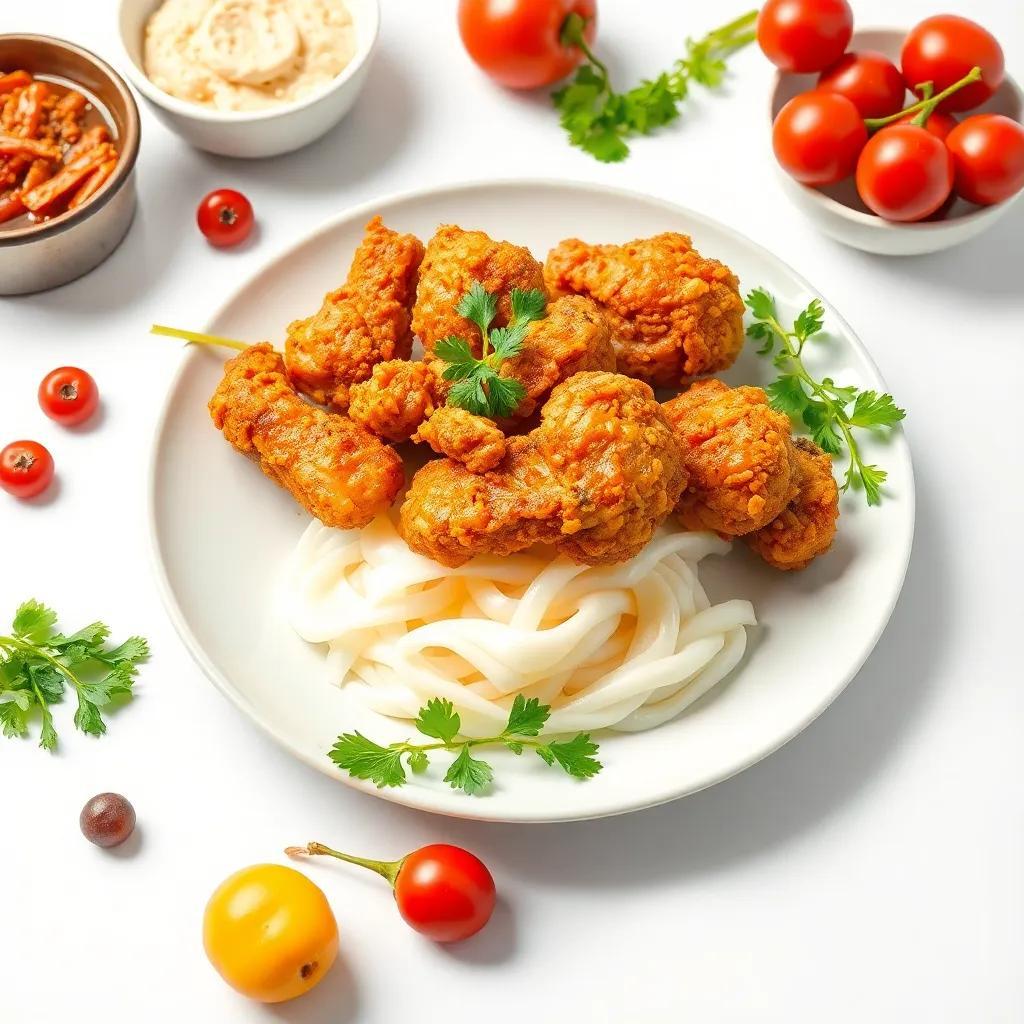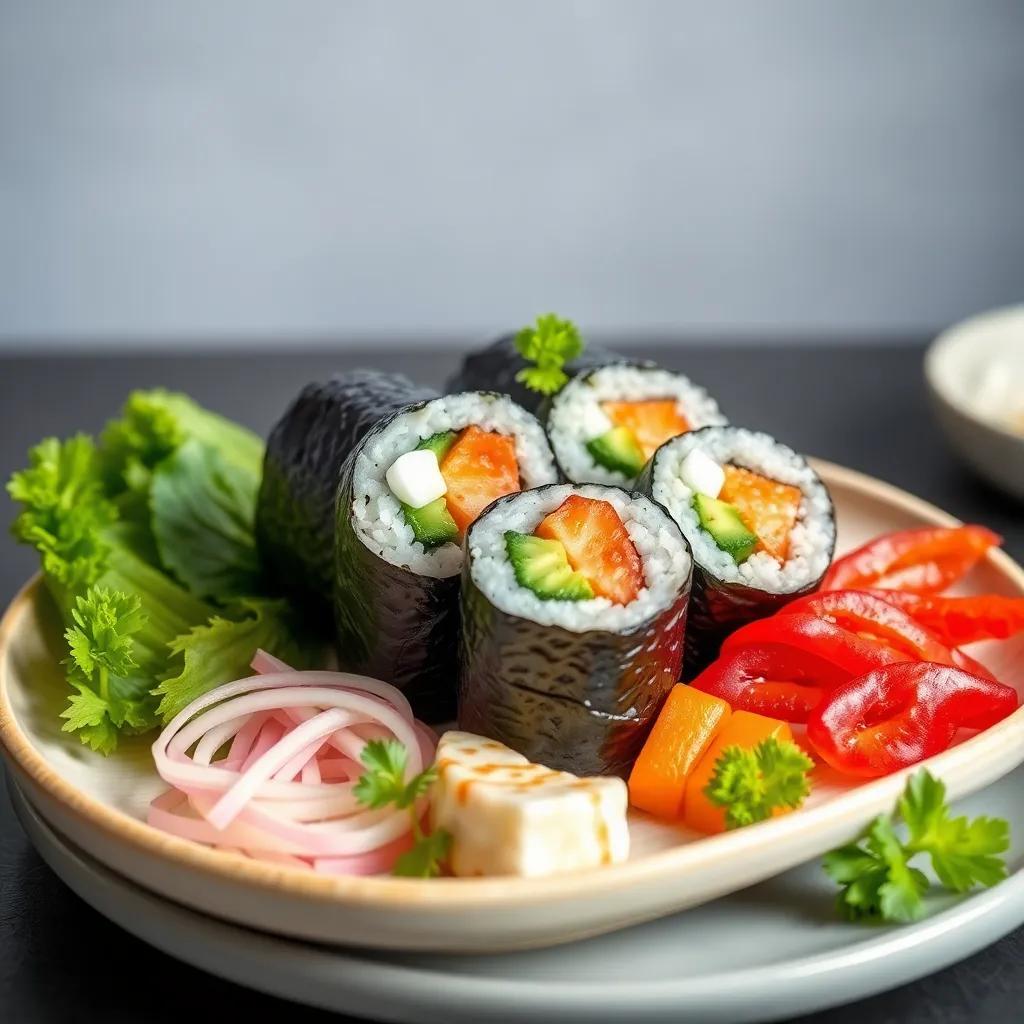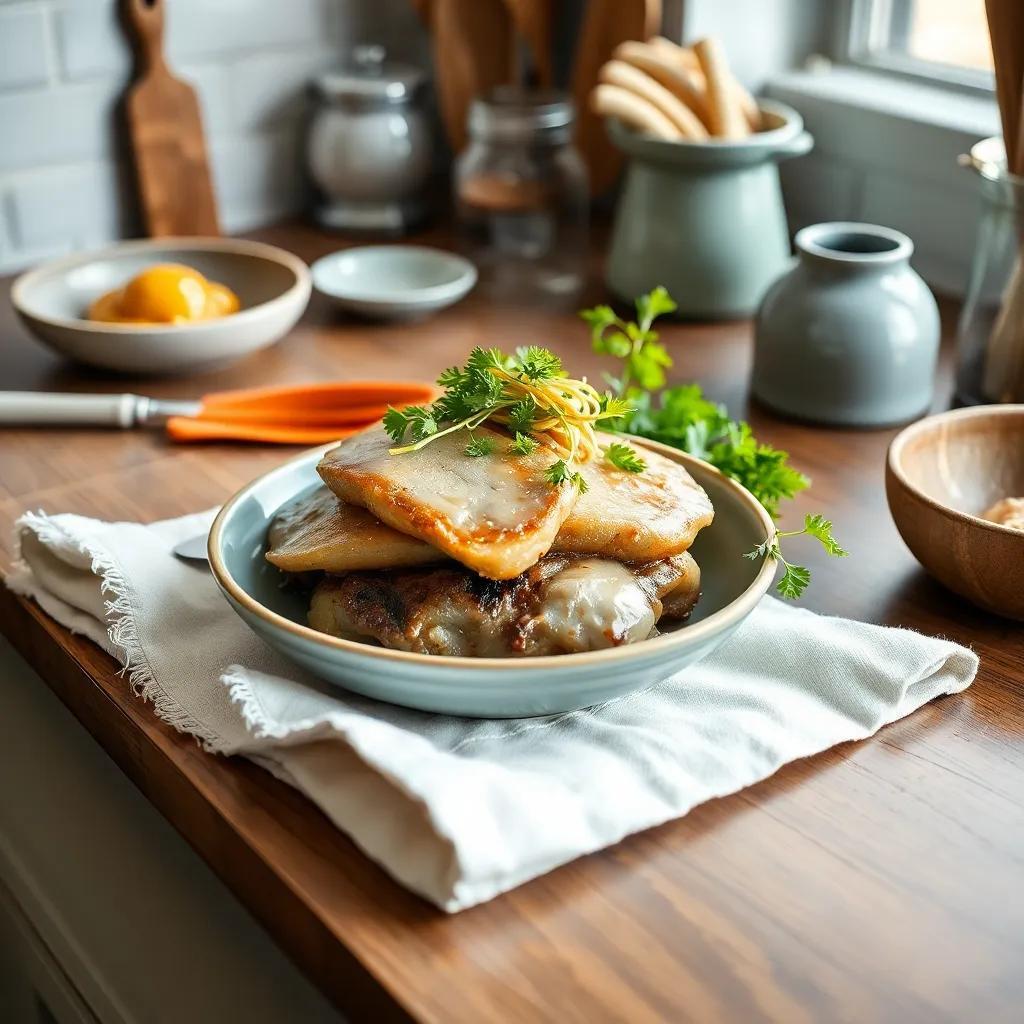Unlock the Secrets of Easy, Authentic Gimbap: Your Ultimate Guide

Unlock the Secrets of Easy, Authentic Gimbap: Your Ultimate Guide
🌍 Cuisine: Korean
⚙️ Difficulty: Easy
Ingredients
Nutrition Facts
300 kcal
Instructions
- Cook the short-grain rice according to package instructions, then let it cool slightly.
- In a bowl, mix the cooked rice with sesame oil and salt, then set aside.
- Fry the beaten eggs in a lightly oiled pan to make a thin egg sheet; once cooled, slice into long strips.
- Sauté julienned carrots lightly in vegetable oil until tender; season with a pinch of salt.
- Prepare the spinach by blanching, squeezing out excess water, then seasoning with salt and a little sesame oil.
- Lay a sheet of roasted seaweed shiny side down on a bamboo rolling mat.
- Evenly spread a thin layer of the seasoned rice over the seaweed, leaving about 1 inch clear at the top edge.
- Arrange egg strips, carrot, spinach, cucumber sticks, pickled radish, and beef bulgogi or ham (if using) horizontally across the rice, about 1–2 inches from the bottom edge.
- Carefully roll the seaweed upward using the bamboo mat, applying gentle pressure to form a tight roll.
- Seal the roll by moistening the clear seaweed edge with a bit of water and finishing the roll.
- Repeat with the remaining sheets and ingredients.
- Lightly brush the rolls with sesame oil and sprinkle toasted sesame seeds on top for extra flavor.
- Using a sharp knife, slice each roll into bite-sized pieces (about 1 inch thick).
- Serve fresh with soy sauce or dipping sauce of choice.
Serving Suggestions
- Serve gimbap chilled or at room temperature for the best texture and flavor.
- Pair with kimchi or pickled vegetables to complement the flavors.
- Enjoy with a cup of hot barley tea or green tea for a traditional Korean meal experience.
- Accompany with a simple dipping sauce made of soy sauce, sesame oil, and a dash of vinegar.
- Include as part of a lunchbox or picnic spread for an easy, portable meal.
- Add a spicy side like gochujang sauce to add a kick to your gimbap.
- Serve as a snack or appetizer for gatherings and parties.
Table of Contents

Intro
Gimbap is a delightful window into Korean home cooking—a vibrant, handheld meal that’s as satisfying to make as it is to eat. This recipe invites you to create authentic gimbap without the fuss, transforming simple ingredients into a beautifully rolled feast that bursts with color, texture, and flavor. Whether you’re packing lunch for a busy day, preparing a picnic, or serving a light yet wholesome dinner, gimbap offers versatility and convenience wrapped in every bite.
What makes this guide special is its focus on ease without sacrificing authenticity. You’ll discover how to balance the delicate harmony of seasoned rice, crisp vegetables, and savory fillings, all wrapped in tender seaweed sheets. The process unfolds naturally, making it perfect even if you’re new to Korean cuisine or rolling sushi-like dishes. Plus, the finished rolls are portable, crowd-pleasing, and visually stunning—ideal for sharing at gatherings or enjoying on the go.
As you embark on this culinary adventure, imagine the bright colors and fresh contrasts that come together with each roll. No complicated techniques, just straightforward steps that bring out the harmonious simplicity and comforting familiarity that make gimbap beloved across Korea and beyond. This is your ultimate gateway to mastering a dish that’s as fun to prepare as it is delicious to savor.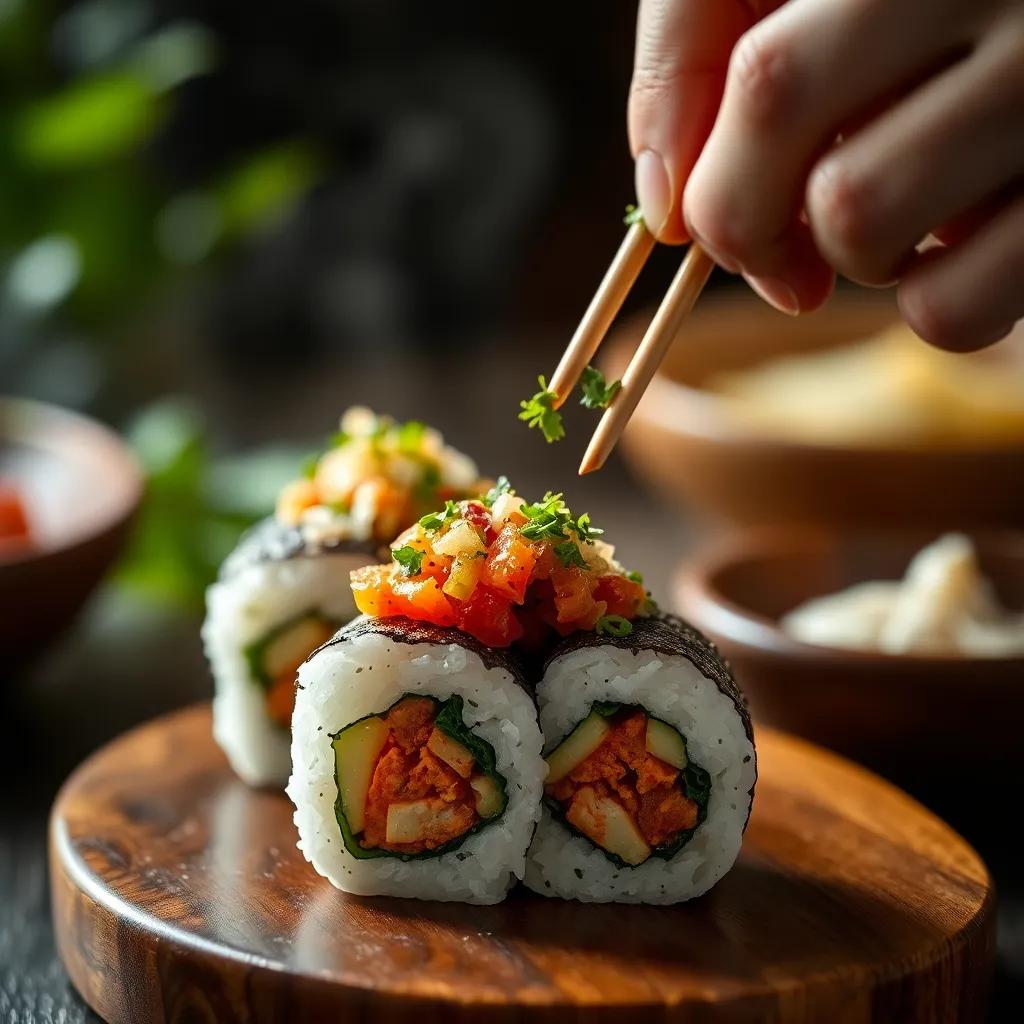
Ingredient Notes
When it comes to authentic gimbap, a few star ingredients quietly carry the weight of flavor and texture, elevating the whole roll beyond just rice and seaweed. Understanding these essentials will not only help you source the best components but also guide you if substitutions become necessary.
Roasted Seaweed (Gim): This is the canvas of your gimbap masterpiece. Look for thin, crisp sheets of roasted seaweed labeled as “gim” in Korean or “nori” in Japanese stores—the key difference is that gim is typically roasted with a light layer of sesame oil, giving it a richer aroma and subtle nuttiness. Freshness is critical here; make sure the sheets aren’t brittle or stale, as that can lead to cracking or an off taste. If gim is hard to find, you can try roasted nori sheets, but avoid versions coated with heavy salt or flavorings that might overpower the delicate filling.
Short-Grain Rice: Authentic gimbap relies on stickier, slightly chewy short-grain white rice. This variety of rice packs tightly, holding the roll together without falling apart, while its mild sweetness balances the savory fillings. When cooking, avoid overcooking or adding too much water, as overly soft rice can sog the seaweed and yield a mushy roll. If you’re looking to make a healthier version, you can swap out half the rice for a short-grain brown rice blend, but note that the texture will be firmer and less sticky, which can affect roll cohesion.
Pickled Radish (Danmuji): These vibrant yellow strips are more than just eye candy—they bring a signature tangy crunch that cuts through the richer flavors of egg and meat. Opt for Japanese takuan or authentic Korean danmuji, which is traditionally pickled in a mild vinegar-sugar brine. If you can’t find them, substituting with quick-pickled daikon or even crisp cucumber ribbons adds a refreshing bite, though the classic color and flavor might be missing.
Sesame Oil: Used both to season the rice and brush the finished rolls, sesame oil is a fragrant, nutty touchstone of Korean cuisine. Choose toasted sesame oil (often dark amber in color) for the most authentic flavor; its aroma elevates the humble rice and helps seal the seaweed roll with a gentle shine. A modest splash goes a long way, so resist the urge to over-oil. If you’re sensitive to sesame or don’t have it on hand, a very light drizzle of neutral oil mixed with a pinch of ground toasted sesame seeds can mimic some of the texture and subtle flavor.
By paying attention to these critical players, you set your gimbap up for success—each ingredient contributing not only taste but also the essential textures that make every bite so satisfying. Combining thoughtful sourcing with small technique tweaks will transform your rolling experience, ensuring your gimbap looks as irresistible as it tastes.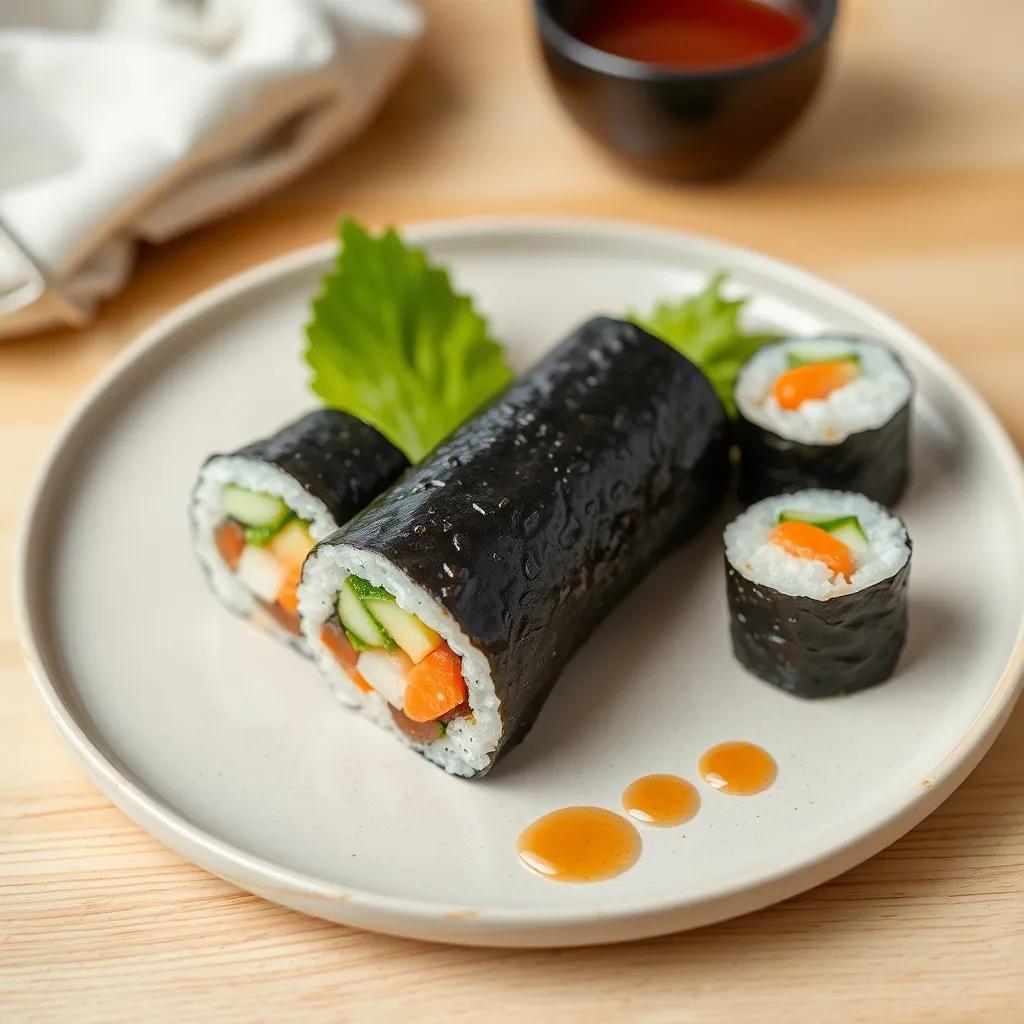
Tips & Variations
Mastering authentic gimbap is as much about technique as it is about creativity, so here are some pro tips and creative twists to help you personalize your rolls while keeping them accessible and delicious.
- Rice Perfection: To get that signature sticky yet fluffy rice, use freshly cooked short-grain rice and ideally let it cool to just above room temperature before spreading it on the seaweed. Avoid piping hot rice as it can make the seaweed soggy and difficult to roll. If you want a little extra flavor in the rice, consider mixing in finely chopped grilled kimchi or a small splash of rice vinegar for subtle tang.
- Rolling Technique: When rolling, don’t rush. Use your fingers to tuck the fillings tightly at the edge as you roll, applying gentle, even pressure with the bamboo mat. This ensures a compact roll that slices cleanly without falling apart. To prevent the knife from sticking, wipe the blade with a damp cloth between cuts.
- Vegetable Prep: Julienne your vegetables evenly and not too thickly—this helps maintain balance in each bite and keeps the roll neat. For an added crunch and color pop, try adding blanched asparagus spears or bell pepper strips as alternatives to the carrot or cucumber.
- Protein Variations: While classic gimbap often features beef bulgogi or ham, it’s extremely versatile. Swap for spicy tofu strips, shredded cooked chicken, or pan-fried mushrooms to suit vegetarian preferences. For a pescatarian twist, thin strips of cooked crab stick or smoked salmon work beautifully and bring a unique depth of flavor.
- Vegan Adaptations: Skip the eggs and meat altogether and load your rolls with seasoned spinach, pickled radish, carrots, cucumbers, and even avocado or marinated shiitake mushrooms. Use a drizzle of sesame oil mixed with a pinch of soy sauce or tamari (for gluten-free) when seasoning your rice to boost umami.
- Seaweed Alternatives: If you have trouble finding gim, you may experiment with fresh Swiss chard or collard green leaves as natural wrappers for gluten-free or grain-free versions. Steamed and dried lightly, these greens offer a hearty, mild-tasting canvas for your fillings.
- Flavor Boosters: Sprinkle toasted sesame seeds or add thin strips of roasted seaweed flakes inside for a nutty crunch. You might also mix in a little finely chopped perilla leaf or shiso for a fragrant lift that’s often overlooked outside Korea.
- Dipping Sauces: Although gimbap is often enjoyed as is, pairing it with simple dipping sauces adds nuance. Mix soy sauce with a splash of rice vinegar, a drop of toasted sesame oil, and a hint of honey or sugar for balance. For spice lovers, add a dab of gochujang or chili oil on the side.
By experimenting with these tips and variations, you can tailor each roll to suit your flavor cravings, dietary needs, and seasonal produce availability. Gimbap’s beauty lies in its flexibility where tradition meets personal taste—unlock that secret and have fun rolling!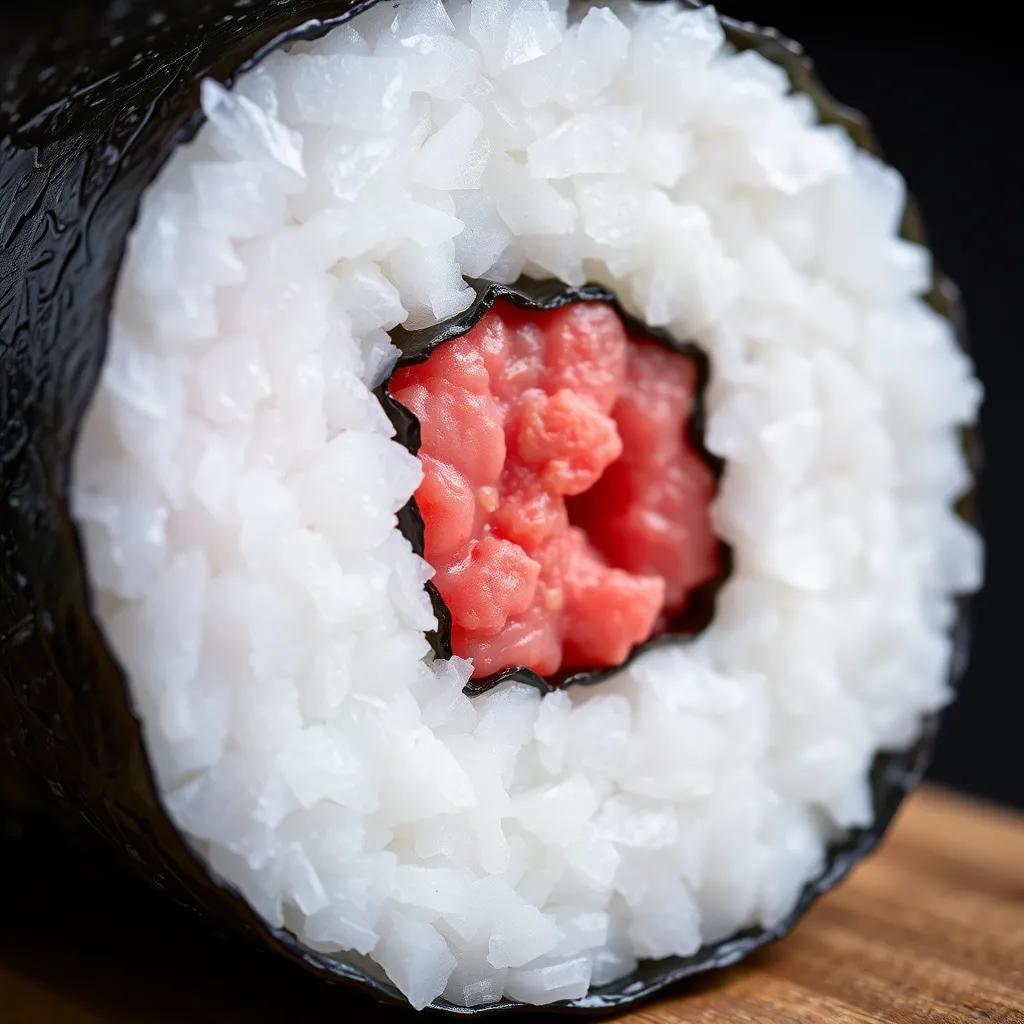
Leftovers & Storage
Leftover gimbap can be a real treat when stored properly, ensuring you enjoy that fresh, satisfying texture and flavor even a day or two later. Because gimbap relies on the delicate balance of slightly sticky rice, crisp vegetables, and roasted seaweed, proper storage is key to preventing sogginess or drying out.
To store leftover gimbap, carefully place the sliced rolls in an airtight container. If you’ve already cut the rolls into bite-sized pieces, try to arrange them in a single layer or with parchment paper between layers to avoid sticking. A tight seal helps maintain moisture without turning the seaweed limp. Keep the container refrigerated and consume the leftovers within 1 to 2 days for the best taste and texture. Beyond that, the rice tends to dry out, and the seaweed can become chewy or rubbery.
If you want to prepare gimbap ahead of time, it’s perfectly suitable for meal prepping, especially if you plan to eat it within the same day or the following morning. For picnics or lunchboxes, wrapping individual rolls tightly in plastic wrap before placing them in a container can help keep them intact and fresh. Before serving leftovers, you can let the gimbap sit at room temperature for about 15 minutes to soften slightly, as cold rice may feel less pleasant to eat straight from the fridge.
Freezing gimbap is generally not recommended because the rice and vegetables lose their texture upon thawing, often becoming mushy and watery. However, if you must freeze gimbap, tightly wrap each roll or piece in plastic wrap followed by aluminum foil or place it in a freezer-safe airtight container. Thaw in the refrigerator overnight before eating, but be prepared for some compromise in quality.
In a pinch, if the seaweed becomes too soft after refrigeration, a quick toast in a dry pan for a few seconds can help revive some crispiness before serving, but use caution not to over-dry or burn it. Similarly, brushing a light layer of toasted sesame oil over the gimbap pieces after reheating can bring back some of the fragrant flavor and prevent dryness.
Remember, the charm of gimbap lies in its fresh, vibrant ingredients, so while leftovers are convenient and often delicious, treat this rolled delight as a fresh-made star whenever possible to savor its full charm.
Behind the Recipe
Gimbap is more than just a delicious bite wrapped in seaweed—it’s a dish steeped in Korean tradition and everyday life, carrying stories of convenience, community, and culinary creativity. Originating as a portable meal during Korea’s rapid modernization in the mid-20th century, gimbap was inspired by Japanese sushi rolls but quickly evolved into an emblem of Korean identity with its own distinct flavors and fillings. It became a beloved staple for picnics, school lunches, military rations, and family gatherings—valued for its balance of nutrition, flavor, and ease of transport.
This recipe captures that spirit of simplicity and balance, blending familiar pantry ingredients into a vibrant, satisfying roll that’s approachable for any home cook. Many Koreans fondly remember gimbap as a symbol of comfort food from childhood or a trusted snack on the go, lovingly rolled by parents or street vendors alike. The harmony of seasoned rice, crisp vegetables, mellow egg, and savory bulgogi reflects Korean culinary philosophy—where texture, color, and taste come together to create a whole greater than the sum of its parts.
On a personal note, making gimbap often sparks joyful memories of shared meals outdoors or bustling lunchboxes on busy weekdays. It invites a hands-on approach, where rolling each piece becomes a mindful moment connecting you to Korean home cooking traditions. Whether you’re new to this dish or revisiting a familiar favorite, the process and flavors offer a window into Korea’s culinary heritage—one delicious slice at a time.
FAQ
Can I substitute the traditional fillings with vegetarian options?
What’s the best way to keep gimbap fresh if I want to prepare it ahead of time?
Can I freeze homemade gimbap, and how should I reheat it?
Are there any good sauce or dip pairings to serve with gimbap?
What rice works best for making authentic gimbap at home?
Can I customize gimbap to suit low-carb or gluten-free diets?
What’s the easiest way to roll gimbap for beginners?
Bon Appétit!
There’s something truly special about crafting your own gimbap — a perfect blend of simplicity, flavor, and tradition wrapped up in every bite. With this guide, you’re not just making a meal; you’re bringing a taste of Korea into your kitchen in the easiest, most authentic way possible. Whether it’s a quick lunch or a fun weekend project, gimbap invites you to get creative and enjoy the process as much as the delicious result.
So why not roll up your sleeves and give it a try? We’d love to hear how your gimbap turned out, any personal twists you added, or even tips you discovered along the way. Feel free to leave a comment, share your rating, or swap ideas — after all, every great recipe gets even better when shared!










